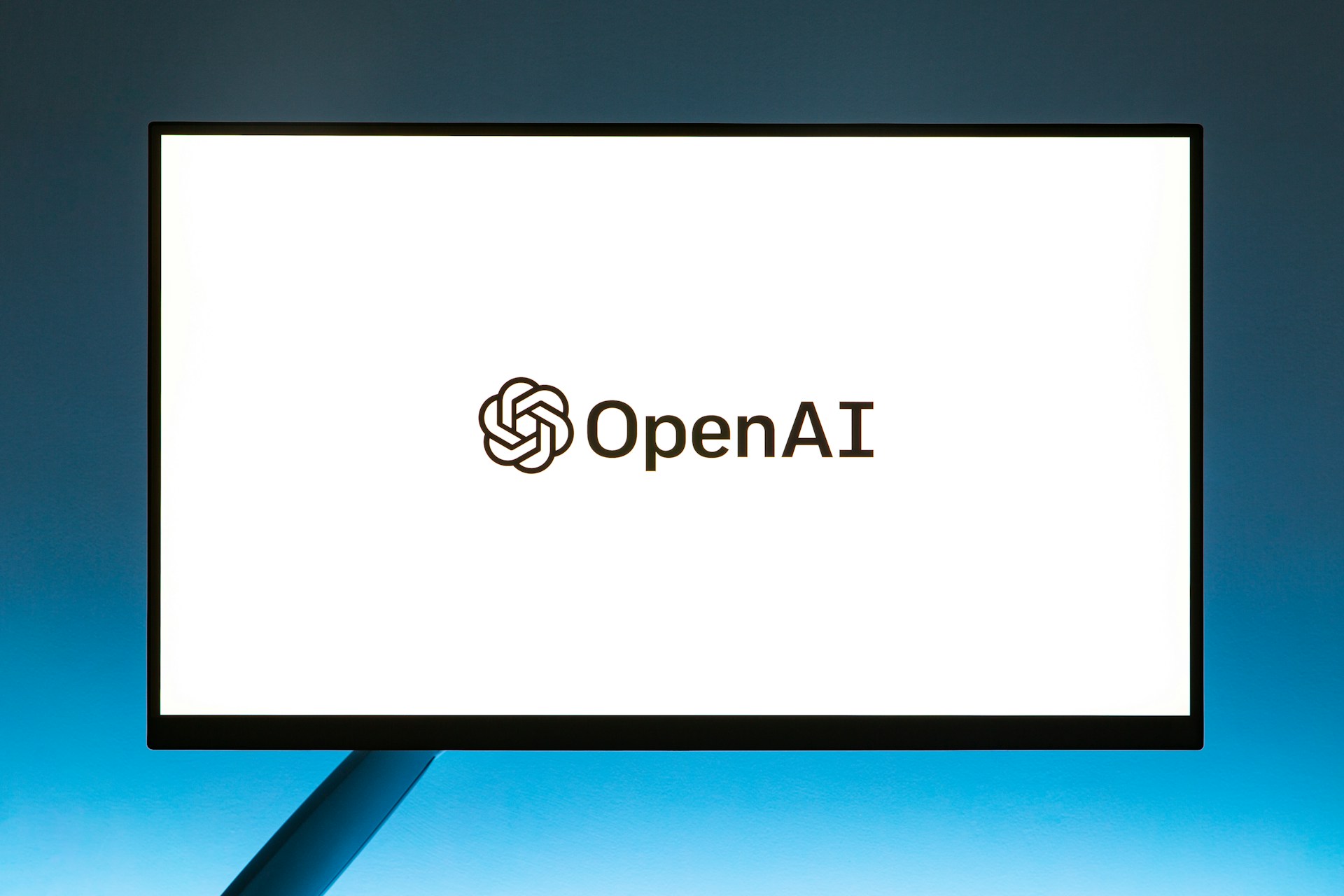
In recent years, the field of Natural Language Processing (NLP) has evolved and made significant advancements, revolutionizing the way machines interact and understand human language. In this blog post, we will explore some of the remarkable improvements in NLP technology, including enhanced conversational capabilities, improved understanding of context and ambiguity, and expanded multilingual support and cross-language communication. We will also delve into the efficient training and fine-tuning methods that have played a crucial role in enhancing the accuracy and effectiveness of NLP systems. Join us as we delve into the exciting world of NLP and uncover how these advancements are shaping the future of human-machine communication.
Advancements In Natural Language Processing
The field of natural language processing (NLP) has come a long way in recent years, thanks to significant advancements in technology and machine learning algorithms. NLP refers to the branch of artificial intelligence (AI) that focuses on the interaction between humans and computers using natural language. With the advent of GPT-4, the latest generation of language models, NLP has reached new heights of sophistication and performance.
One of the key advancements in NLP is the enhanced conversational capabilities offered by GPT-4. This language model has been trained on vast amounts of text data, enabling it to generate human-like responses and engage in more natural conversations. The improved understanding of context and ambiguity is a noteworthy aspect of GPT-4, as it helps the model to accurately interpret and respond to complex queries.
GPT-4 also boasts expanded multilingual support and cross-language communication. It can comprehend and generate text in multiple languages, facilitating effective communication between people from different linguistic backgrounds. This advancement brings us closer to breaking down language barriers and promoting global connectivity.
- Moreover, GPT-4 introduces efficient training and fine-tuning methods that enable faster and more effective model development. This means that researchers and developers can iterate and improve the performance of NLP models at a quicker pace, allowing for rapid innovation and adaptation.
| The Advancements in Natural Language Processing |
|---|
| Enhanced Conversational Capabilities |
| Improved Understanding of Context and Ambiguity |
| Expanded Multilingual Support and Cross-Language Communication |
| Efficient Training and Fine-Tuning Methods |
In conclusion, the advancements in natural language processing, particularly with the release of GPT-4, have revolutionized the way computers understand and process human language. The improved conversational capabilities, enhanced understanding of context and ambiguity, expanded multilingual support, and efficient training methods have opened up new possibilities for AI applications in various industries. With these advancements, we can expect even more exciting developments in the field of NLP in the future.
Enhanced Conversational Capabilities
Enhanced Conversational Capabilities
In today’s digital age, the development of conversational AI has become a prominent area of research. With advancements in Natural Language Processing (NLP) and the introduction of cutting-edge language models like GPT-4, conversational agents have become increasingly sophisticated. These agents are designed to simulate human-like conversations and provide users with a seamless and interactive experience.
One of the key factors contributing to enhanced conversational capabilities is the continuous evolution of NLP algorithms. NLP algorithms enable machines to understand and generate human language, making it possible for conversational agents to interpret and respond to user queries in a more natural and contextual manner. With the help of powerful models like GPT-4, which is trained on vast amounts of text data, these agents can generate responses that are coherent, relevant, and closely resemble human communication.
Moreover, improved understanding of context and ambiguity plays a crucial role in enhancing conversational capabilities. Conversational agents are now better equipped to grasp the meaning behind user queries by taking into account the surrounding context. This makes it easier for them to provide accurate and personalized responses, even when faced with ambiguous or unclear inputs.
- In addition to language processing advancements, expanded multilingual support and cross-language communication capabilities have further elevated conversational AI. The ability to communicate seamlessly across different languages has opened up new opportunities for global businesses and facilitated effective interaction with users from diverse linguistic backgrounds. Conversational agents can now effortlessly switch between languages, ensuring that language barriers are no longer a hindrance in effective communication.
| Advancements in Natural Language Processing (NLP) | Improved Understanding of Context and Ambiguity | |
| Efficient Training and Fine-Tuning Methods | Expanded Multilingual Support and Cross-Language Communication |
To achieve these enhanced conversational capabilities, efficient training and fine-tuning methods are employed. GPT-4, for instance, utilizes advanced training techniques that help fine-tune the model’s parameters to improve its conversational abilities. These techniques involve exposing the model to vast amounts of conversational data, allowing it to learn from real-world examples and refine its responses accordingly.
In conclusion, the field of conversational AI has witnessed significant advancements in recent years, leading to enhanced conversational capabilities. With the help of NLP algorithms, powerful models like GPT-4, and improved understanding of context and ambiguity, conversational agents can now engage in more human-like and contextually-aware conversations with users. The expansion of multilingual support and efficient training methods further contribute to the comprehensive conversational experiences offered by these AI-powered agents.
Improved Understanding Of Context And Ambiguity
Improved Understanding of Context and Ambiguity
In recent years, advancements in Natural Language Processing (NLP) have brought about a significant improvement in the understanding of context and ambiguity in chat and communication systems. With the introduction of state-of-the-art language models like GPT-4, the capabilities of these systems have been enhanced to a great extent. These models are designed to analyze and interpret text, enabling machines to understand the nuances of human language more accurately. This breakthrough in NLP has opened up new possibilities for various applications, including chatbots, virtual assistants, and language translation tools.
One of the key challenges in NLP has always been the ability to accurately understand the context of a conversation and resolve any ambiguities that arise. Contextual understanding is crucial for grasping the true meaning behind a statement or a question. With traditional NLP models, this was often a challenging task as they struggled to capture the complexity and subtlety of human language. However, with the arrival of advanced models like GPT-4, a significant leap in the understanding of context and ambiguity has occurred.
The enhanced conversational capabilities of GPT-4 have revolutionized the way machines comprehend and respond to human language. This advanced language model incorporates powerful techniques like deep learning and attention mechanisms, enabling it to consider the broader context of a conversation and make more informed responses. The model can analyze previous statements, identify relevant information, and generate accurate and contextually appropriate responses.
- Furthermore, GPT-4 excels at handling linguistic ambiguities. Ambiguity is a common occurrence in human language, where words and phrases can have multiple meanings depending on the context. Previous NLP models often struggled with disambiguating these situations correctly. However, GPT-4’s improved understanding of context enables it to resolve ambiguities more effectively.
| Advantages of Improved Understanding of Context and Ambiguity |
|---|
| 1. Enhanced accuracy in language translation |
| 2. More natural and contextually appropriate responses from chatbots |
| 3. Improved performance of virtual assistants in understanding user queries |
| 4. Better comprehension and analysis of social media conversations |
| 5. Increased efficiency in extracting insights from large textual datasets |
Improved understanding of context and ambiguity has a profound impact on various sectors, such as customer service, language translation, and data analysis. For example, customer service chatbots equipped with GPT-4 can provide more accurate and personalized responses, leading to better customer satisfaction. In addition, language translation tools powered by GPT-4 can produce more precise translations that take into account the context and intricacies of different languages.
Expanded Multilingual Support And Cross-Language Communication
With the ever-increasing globalization and interconnectedness of our world, the need for expanded multilingual support and cross-language communication has become paramount. Language should not be a barrier in today’s highly diverse and globalized society, and advancements in natural language processing (NLP) have made it possible to bridge this gap. One such revolutionary development in the field of NLP is the advent of GPT-4, a highly advanced language model that has the potential to revolutionize multilingual support and cross-language communication.
GPT-4, short for “Generative Pre-trained Transformer 4,” is an AI-based language model developed by OpenAI. It utilizes state-of-the-art deep learning techniques to understand and generate human-like text. What sets GPT-4 apart is its exceptional ability to comprehend and generate text in multiple languages. This expanded multilingual support enables users to communicate effortlessly across language barriers.
Thanks to GPT-4’s enhanced conversational capabilities, it can understand the context and nuances of different languages, making communication much more accurate and meaningful. The model leverages vast amounts of multilingual data to train and improve its language understanding abilities continually. As a result, it can provide responses and translations that are not only grammatically correct but also contextually relevant in various languages.
- Improved understanding of context and ambiguity is a critical aspect of robust multilingual support. GPT-4 excels in this area, utilizing advanced algorithms to analyze the intricacies of language. By recognizing subtle cues and references, the model can better grasp the intended meaning behind words or phrases, even when they may have multiple interpretations.
- In addition to its understanding of context, GPT-4 incorporates efficient training and fine-tuning methods to continually improve its language capabilities. The model is trained on a vast corpus of multilingual text, enabling it to develop a deep understanding of the idiosyncrasies and nuances of different languages. Moreover, GPT-4’s architecture allows for fine-tuning on specific language tasks, further enhancing its accuracy and performance.
In conclusion, the advent of GPT-4 has ushered in a new era of expanded multilingual support and cross-language communication. With its ability to comprehend and generate text in multiple languages, GPT-4 breaks down language barriers and fosters seamless communication across linguistic and cultural boundaries. As technology continues to advance, we can expect even greater advancements in natural language processing, leading to a more connected and inclusive global community.
| Advancements in Natural Language Processing | Enhanced Conversational Capabilities | Improved Understanding of Context and Ambiguity | Expanded Multilingual Support and Cross-Language Communication | Efficient Training and Fine-Tuning Methods |
|---|---|---|---|---|
| ✓ | ✓ | ✓ | ✓ | ✓ |
Efficient Training And Fine-Tuning Methods
In the field of Natural Language Processing (NLP), efficient training and fine-tuning methods play a vital role in developing advanced language models. With the advent of GPT-4 (Generative Pre-trained Transformer), these methods have reached new heights, resulting in improved language understanding and generation capabilities.
One of the key factors that contribute to the efficiency of training methods is the availability of large-scale datasets. GPT-4 leverages massive amounts of text data from diverse sources, allowing the model to learn patterns and extract meaningful information effectively. The use of such extensive datasets enables the model to capture various linguistic nuances and context-specific information, making it more knowledgeable and versatile in generating human-like responses.
In addition to large-scale datasets, GPT-4 also benefits from advanced fine-tuning techniques. Fine-tuning involves training a pre-trained language model on a specific task or domain using a smaller task-specific dataset. This process allows the model to adapt to specific requirements and generate more accurate and contextually relevant responses. Fine-tuning helps in overcoming the limitations of the generic language model and tailors it to specific applications, such as customer support chatbots or virtual assistants.
- Efficient training and fine-tuning methods are crucial for enhancing the overall performance of language models. These methods enable faster convergence and more effective utilization of computational resources, resulting in improved training efficiency. The advancement in training methods has also led to the development of more compact models without sacrificing their capabilities. This allows for easier deployment on various devices, including mobile phones and edge devices, expanding the reach of NLP applications.
| Benefits of Efficient Training and Fine-Tuning Methods: |
|---|
| 1. Improved Performance: Efficient training and fine-tuning methods contribute to enhanced language understanding and generation capabilities of models like GPT-4. |
| 2. Task-Specific Adaptability: Fine-tuning enables the customization of language models to specific tasks or domains, resulting in contextually relevant responses. |
| 3. Compact Models: Advances in training methods have led to the development of smaller models that can be easily deployed on various devices. |
Frequently Asked Questions
What are some advancements in Natural Language Processing?
Advancements in Natural Language Processing include enhanced conversational capabilities, improved understanding of context and ambiguity, expanded multilingual support and cross-language communication, and efficient training and fine-tuning methods.
How have conversational capabilities been enhanced in Natural Language Processing?
Conversational capabilities in Natural Language Processing have been enhanced through advancements in language models, allowing for more accurate and context-aware responses.
What is the importance of understanding context and ambiguity in Natural Language Processing?
Understanding context and ambiguity is crucial for Natural Language Processing systems to accurately interpret and respond to user queries, taking into account the broader meaning and context of the conversation.
How has multilingual support and cross-language communication improved in Natural Language Processing?
Natural Language Processing has seen advancements in multilingual support, enabling systems to understand and process multiple languages, and cross-language communication, facilitating seamless translation and communication across different languages.
What are efficient training and fine-tuning methods in Natural Language Processing?
Efficient training and fine-tuning methods in Natural Language Processing involve techniques like transfer learning, pre-training language models on large corpora of data, and fine-tuning them on specific tasks or domains to achieve better performance.
What are some potential applications of smarter language models in Natural Language Processing?
Smarter language models in Natural Language Processing have potential applications in various fields, including chatbots, virtual assistants, customer support, content generation, language translation, and information retrieval, among others.
In conclusion, what can we expect from advancements in Natural Language Processing?
Advancements in Natural Language Processing will continue to drive progress in language understanding, conversation generation, and communication across different languages, leading to more powerful and versatile applications for businesses and end-users.








